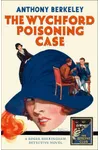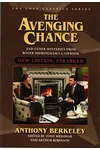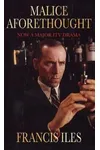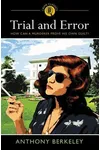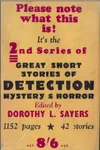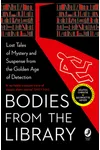Picture a clever Englishman spinning tales of murder and mischief, outsmarting readers with every twist—meet Anthony Berkeley! Born in 1893, this mystery master, also known as Francis Iles, redefined crime fiction during the Golden Age. With his sharp wit and psychological flair, Berkeley didn’t just write stories; he crafted puzzles that still captivate sleuths today.
As a founding member of the Detection Club, Berkeley rubbed elbows with legends like Agatha Christie. His novels, packed with cunning plots and complex characters, pushed the genre into bold new territory. Ready to unravel his story? Let’s dive into the life and legacy of this literary trailblazer.
The Making of Anthony Berkeley
Anthony Berkeley Cox was born on July 5, 1893, in Watford, England, to a doctor father and a scholarly mother with ties to the Earl of Monmouth. Educated at Sherborne School and University College, Oxford, he served in World War I, where he was gassed, impacting his health long-term. His early career sparkled with humorous sketches for Punch, later collected as Jugged Journalism in 1925. But it was his love for mysteries, inspired by his father’s passion for the genre, that led to his debut novel, The Layton Court Mystery, published anonymously that same year.
Berkeley’s knack for storytelling grew from his journalistic roots and a fascination with true crime. His wit and skepticism of human nature shaped his unique voice, blending humor with dark intrigue. By 1928, he’d founded the Detection Club, a hub for top crime writers, cementing his influence in the literary world.
Anthony Berkeley’s Unforgettable Stories
Berkeley’s novels are like a masterclass in misdirection. His amateur sleuth Roger Sheringham, introduced in The Layton Court Mystery (1925), is no Sherlock Holmes. Charming yet fallible, Sheringham stumbles through cases with urbanity and wit, often missing the mark until the final twist. This debut, a locked-room puzzle about a wealthy host’s suspicious suicide, blends humor with a shocking ending that defies convention.
The Poisoned Chocolates Case (1929) is Berkeley’s masterpiece, where six armchair detectives propose wildly different solutions to a single murder. Inspired by the Detection Club, it’s a dazzling display of narrative ingenuity, toying with readers’ expectations. Writing as Francis Iles, Berkeley pioneered the inverted mystery with Malice Aforethought (1931), revealing the killer upfront and diving into their psyche. Before the Fact (1932), also as Iles, inspired Hitchcock’s 1941 film Suspicion, exploring paranoia and betrayal with chilling depth.
Berkeley’s style leaned heavily on psychology, dissecting motives and human flaws. His plots, often laced with irony, challenged the formulaic whodunits of his era. Whether it’s the quirky Ambrose Chitterwick in The Piccadilly Murder or the morally gray characters of Jumping Jenny, Berkeley’s stories are as much about the mind as the crime.
Why Anthony Berkeley Matters
Berkeley didn’t just write mysteries; he reshaped them. His psychological approach laid the groundwork for modern crime fiction, influencing writers like P.D. James and Ruth Rendell. By focusing on motive over mere puzzles, he brought depth to a genre often dismissed as frivolous. The Detection Club, his brainchild, fostered collaboration among giants like Christie and Sayers, setting standards for detective fiction that endure today.
Though less famous now, Berkeley’s legacy lives in his innovative storytelling. His ability to blend wit, suspense, and social commentary makes his work timeless. Scholars and fans still celebrate his contributions, with reprints like The Poisoned Chocolates Case introducing new readers to his genius.
- Born: July 5, 1893, Watford, England
- Key Works: The Layton Court Mystery, The Poisoned Chocolates Case, Malice Aforethought, Before the Fact
- Pseudonyms: Francis Iles, A. Monmouth Platts
- Died: March 9, 1971
Snag The Poisoned Chocolates Case and dive into Anthony Berkeley’s wickedly clever world of crime and cunning!

